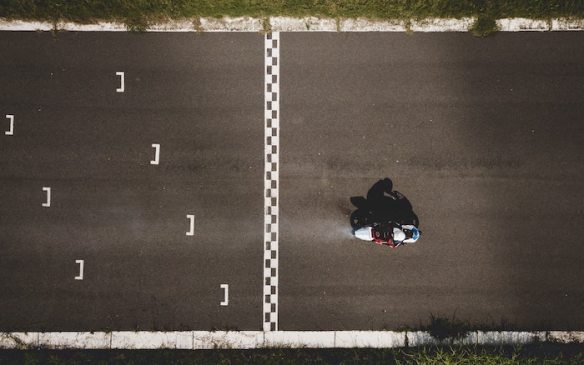The median employee age at top tech companies in America: CHART – Business Insider
 Older people are smarter ...
Older people are smarter ...
Reviving Old Content, Part 3
We had the usual gloomy December weather during the end-of-year holidays, and together with the partial lockdown (with confusing ever-changing rules only someone in Balkans could dream up) it managed to put me in OCD mood… and so I decided to remove broken links from the old blog posts.
While doing that I figured out how fragile our industry is – I encountered a graveyard of ideas and products that would make Google proud. Some of those blog posts were removed, I left others intact because they still have some technical merits, and I made sure to write sarcastic update notices on product-focused ones. Consider those comments Easter eggs… now go and find them ;))
Anyway, I also salvaged some of the old content I was stupid enough to publish somewhere else from archive.org. Here it is:
- Disable Flapping BGP Neighbors
- VRF Routing Process Limitations
- SPF Events in OSPF and IS-IS
- PE-to-PE Troubleshooting in MPLS VPN Networks
- Unequal-Bandwidth EBGP Load Balancing
- Load Balancing with Parallel EBGP Sessions
- Using EIGRP in MPLS VPN Networks
- Conditional BGP Route Origination
- Using IP Prefixes, AS Numbers and Domain Names in Examples
- Multihomed IP Hosts
- RIBs and FIBs (aka IP Routing Table and CEF Continue reading
Reviving Old Content, Part 3
We had the usual gloomy December weather during the end-of-year holidays, and together with the partial lockdown (with confusing ever-changing rules only someone in Balkans could dream up) it managed to put me in OCD mood… and so I decided to remove broken links from the old blog posts.
While doing that I figured out how fragile our industry is – I encountered a graveyard of ideas and products that would make Google proud. Some of those blog posts were removed, I left others intact because they still have some technical merits, and I made sure to write sarcastic update notices on product-focused ones. Consider those comments Easter eggs… now go and find them ;))
BGP in 2020 – BGP Update Churn
The first part of this report looked at the size of the routing table and looked at some projections of its growth for both IPv4 and IPv6. However, the scalability of BGP as the Internet’s routing protocol also is related to the rate of dynamic routing updates. If the update rate of BGP is growing faster than we can deploy processing capability to match, then the routing system will lose coherence, and at that point the network will head into periods of instability. This second part of the BGP report looks at the profile of BGP updates across 2020Rails 6 Database Record Pagination with Pagy
In this post I will outline a method the paginate database records in a Rails 6 app using the Pagy. gem. I will also cover the process of styling the paging navbar with bootstrap and font awesome icons. Software The following software was used in this post. Rails - 6.0.3.4 Pagy -...Suzieq has a GUI
We haven’t blogged for three months. We’ve been busy working on Suzieq, adding features and figuring out where we want it to go. We haven’t blogged about Suzieq for even longer. Since we last blogged about Suzieq, we’ve added tons of new features and platforms. In no specific order, we’ve...Playing with Python Ransomware
I recently came across the Python script pokus.py which implements a ransomware function. The code is written for demonstration purposes only, so it completely lacks obfuscation techniques. The goal is to identify the vulnerability that is intentionally implemented in the code so we can restore the attached file - private.gif.rsw (the file is compressed by […]Continue reading...
BGP in 2020 – The BGP Table
At the start of each year I have been reporting on the behaviour of the inter-domain routing system over the past 12 months, looking in some detail at some metrics from the routing system that can show the essential shape and behaviour of the underlying interconnection fabric of the Internet.How I Installed Tasmota Firmware on a Treatlife Switch
For years now I've had a light switch that can be programmed to turn itself on/off on a schedule. The switch is programmed with the date, time, time zone, and lat/long and then you can create a schedule such as, "turn the lights on at sun set". It works pretty well except when 1/ daylight savings time starts or stops (the schedule doesn't adjust itself) or 2/ the power goes out (bye, bye all programming).
This slight annoyance coupled with my desire for a project I could geek out on lead me to look into software-controllable light switches.
In this post I'll explain how I flashed the open source Tasmota firmware onto the Treatlife 3-way wall switch which in the end allowed me to control the lights via a home automation controller.
2021 Goals
What are my plans for 2021.PCNSA 10
Palo Alto Certified Network Security Administrator PanOS 10.7 Technologies That Surged or Reemerged in 2020
Many networking and infrastructure technologies that shined in 2020 will play a major role in the enterprise in years to come.Winning in 2021

I’d jump in here and say something about 2020 being a crazy year but we all know it’s nothing we haven’t heard before. I’d also say that we’re going to look back at my big plans for the year however we also know that those got scrapped right after the end of February. I like looking back at a couple of things and then looking forward to what the next year will accomplish. Why? Because retrospectives are boring and putting your planning out there for the world to see is a much more interesting use of your time. The journey you’re taking changes greatly when you change your thinking about the destination.
2020 Good or Bad
2020 wasn’t all bad. I finally justified getting a new office chair! All kidding aside, 2020 was a year that challenged everyone greatly when it came to mental health, professional output, and even personal capability. My biggest focus for 2020 was to start putting blog posts out earlier in the week and focus on continuous improvement. I’d say the first was another miss due to the hectic workload, as a lot of my posts still came out on Fridays.
The second point was a Continue reading
Launching a podcast in 2020: what the hell were we thinking?
Co-hosts Derick and Brandon are joined by the rest of the podcast production team, including Lisa Garvey, Charlie Elliott, and Aditya Chakraborty, to discuss the pitfalls, highlights, and lessons learned from creating a podcast in the disastrous year of 2020.
2021 Goals
2020 was a bit of a write off. 2021 is the year that the empire of Brad strikes back. 2021 Goals Health and Fitness Family Certifications Books Automation Mansformation Health and Fitness This year I will continue the healthy lifestyle and I am setting myself some ambitous...PCNSA 10
My number one certification goal for 2021 is the PCNSA 10 certification. I require it for my new role so I am getting stuck right in. In this post I will document the resources and links to my personal notes for the PCNSA 10 certification. I will update this document as I go up until...EVE-NG add Palo Alto PanOS 10 VM
How to add a Palo Alto PanOS 10 VM to EVE-NG.2020 Year In Review
How did I go with my 2020 goals.Member News: Connecting Remote Tribes

Connecting the people: The San Francisco Chapter recently received a Beyond the Net Grant from the Internet Society Foundation and will use it to help bring high-quality Internet service to more than 9,000 Native Americans in in a remote area of southern California. The grant will be used to extend wireless service about seven miles further into tribal lands.
Campaign against disinformation: The Netherlands Chapter is working with the artificial intelligence-powered KRINO Project to fight fake news online. KRINO will be able to analyze online content, including political statements, social media posts, and even medical information, but with humans reviewing its recommendations. The AI-based tool is in development, and the chapter’s Make Media Great Again Working Group will help fine tune the tool.
How the Internet works: Recently, two Internet Society chapters have hosted Internet-related training programs for members of the community. The Mali Chapter hosted the first edition of the Mali School of Internet Governance, with 46 people, including lawyers, engineers, law enforcement officers, and students, participating. The goal of the training is to give participants the knowledge and confidence to participate effectively in Internet governance processes and debates at regional, national, and international levels.
Digital literacy: The Panama Chapter Continue reading